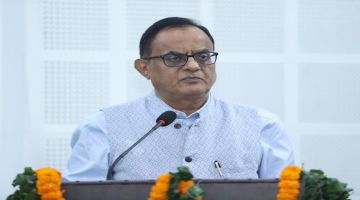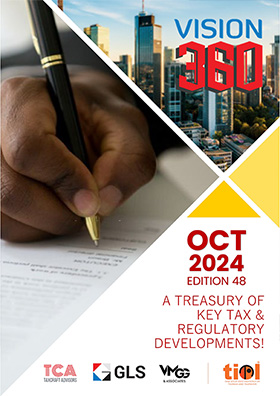ST - Interpretation by petitioner, as argued, if upheld, would have catastrophic effects: HC
By TIOL News Service
CHANDIGARH, APRIL 03, 2018: THE petitioners are cable operators carrying on business of cable services at Amritsar.
This petition has been filed for quashing an order dated 16.09.2015 appointing adjudicating authorities to decide the SCNs issued to cable operators regarding their liability to pay service tax and an order dated 08.12.2016 passed by the Deputy Commissioner in the petitioner's case confirming the tax liability along with interest and penalty for the period 01.10.2009 to 30.06.2012.
The writ petition raises two issues -
(i) that the order dated 16.09.2015 appointing respondent No.4 as an adjudicating authority is bad, as by notification dated 19.04.2007, only Commissioners of Central Excise were given the powers of Central Excise Officers. As a result order dated 08.12.2016 is without jurisdiction, having been passed by the Deputy Commissioner; and
(ii) that the order dated 16.09.2015 is contradictory to the CBEC Circular dated 29.09.2016 . Order dated 16.09.2015 appoints various officers for adjudicating similar notices issued to various noticees, whereas as per the Circular, it should be decided by one adjudicating authority who had competence to decide the case involving the highest amount of duty.
The High Court observed that although the impugned order dated 08.12.2016 is an appealable one, the petition was nevertheless being entertained as a question of jurisdiction was raised.
To the submission of the petitioner, by placing reliance on a notification dated 19.04.2007, that only the CCE have been conferred power u/s 83A of the FA, 1994, to adjudicate a case, the High Court noted that the submission is not well founded.
After extracting the provisions of section 83A of FA, 1994, rule 3 of STR, 1994, the impugned notifications of year 2005 [30/2005-ST dt. 10.08.2005] and 2007 [16/2007-ST dt. 19.04.2007], the High Court further observed –
+ The powers of adjudication have been given under Section 83A of the Act to the Central Excise Officers. The power is conferred by the Central Board of Excise and Customs by a notification. As per Rule 3, the Board may appoint the Central Excise Officers and also assign the local limits and specify the taxable services. In exercise of power conferred under Section 83A of the Act, the Board issued the notification dated 10.08.2005. Assistant Commissioner, Deputy Commissioner, Joint Commissioner, Additional Commissioner and Commissioner of Central Excise were appointed as Central Excise Officers and their monetary limits for purpose of adjudication were fixed in column (3) of the notification.
+ The notification of 2007 is not in supersession of the earlier notification. The two notifications operate for different purposes. The notification of 2005 appoints various officers as Central Excise Officers and specifies the monetary jurisdiction for the purpose of adjudication, whereas under the 2007 notification, the Commissioners of Central Excise have been appointed as the Central Excise Officers giving them jurisdiction throughout India, only for cases of investigation and adjudication which are assigned by the Board.
In view of the above, the High Court rejected the contention raised by the petitioner that the order dated 08.12.2016 passed by the Deputy Commissioner is without jurisdiction.
Another argument was made by the Petitioner based on clause 11.2 of the Master Circular and that was that since a common issue is involved in all the show cause notices issued to various noticees, there cannot be different adjudicating authorities; that all the show cause notices should be adjudicated by a competent adjudicating authority who has jurisdiction to decide the case involving the highest amount of duty.
In this regard, the High Court extracted clauses 11.2 and 11.5 of the Master Circular 1053 dated 10 March 2017 which reads -
11.2 Other important points :
Cases involving taxability, classification, valuation and extended period of limitation shall be kept out of the purview of adjudication by Superintendents. Such cases, upto rupees 10 Lakhs, shall also be adjudicated by the Deputy Commissioner/Assistant Commissioner in addition to the cases exceeding rupees 10 Lakhs but not exceeding rupees 50 lakh.
i. Refund matters (including rebate), shall be adjudicated by the Deputy Commissioner/ Assistant Commissioner without any monetary limit
ii. In case different show cause notices have been issued on the same issue answerable to different adjudicating authorities, Show Cause Notices involving the same issue shall be adjudicated by the adjudicating authority competent to decide the case involving the highest amount of duty.
11.5 In case different show cause notices have been issued on the same issue to same noticee(s) answerable to different adjudicating authorities, Show Cause Notices involving the same issue shall be adjudicated by the adjudicating authority competent to decide the case involving the highest amount of duty.
The High Court thereafter observed that there is a fallacy in the argument made by the petitioner inasmuch as –
++ Clause 11.2 (ii) of the Master Circular does not mean that show cause notices issued to different noticees on the same issue shall be adjudicated by one authority. It would relate only to cases where on a similar issue different show cause notices have been issued to the same noticee.
++ The circular will save the noticee running from pillar to post before various adjudicating authorities and defending similar notices at different levels. The view is fortified by a reading of clauses 11.2 and 11.5 of the Master Circular. Clause 11.5 clarifies the position. If different show cause notices have been issued on the same issue to the same noticee answerable to different adjudicating authorities, then all the show cause notices would be decided by the adjudicating authority in a case involving the highest amount of duty.
Concluding that the interpretation of clause 11.2 of the Master Circular, as argued, if upheld, would have catastrophic effects, the Writ Petition was dismissed.
However, the High Court observed that since it had not adjudicated upon the merits of the case, the petitioners would be at liberty to avail their remedy of a statutory appeal against the impugned order dated 08.12.2016.
(See 2018-TIOL-567-HC-P&H-ST)















